Without a doubt, squats are the best exercise to build lower-body strength. When done properly, they target your glutes, hamstrings and quads and incorporate core stability. And there's no exercise that will make you look as good from behind as squats will.
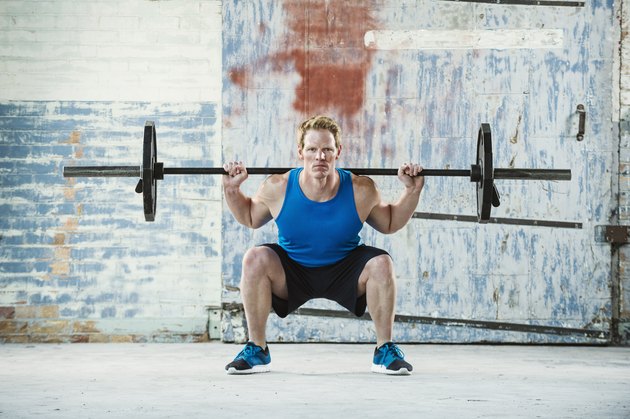
Advertisements
But squats — just like any other exercise — can get repetitive, and if you don't vary the way you're doing them, your body will adapt and you'll stop seeing results. So here are 11 additional squat variations. Master proper form on the basic body-weight squat first, and then move on to more challenging variations. Your quads and glutes might be burning by the end, but your posterior will thank you.
1. Body-Weight Squat Proper form for body-weight squats. (Image: Demand Media Studios)
Proper form for body-weight squats. (Image: Demand Media Studios)
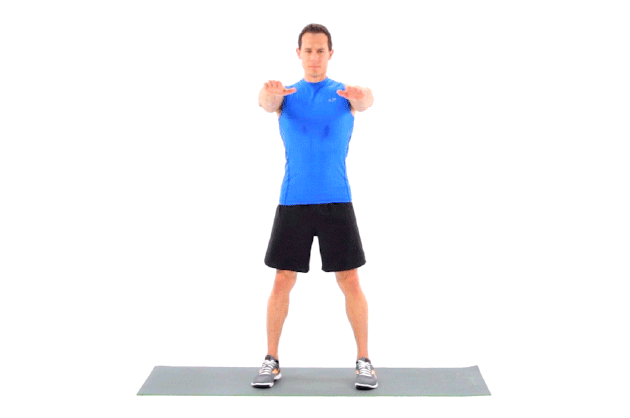
When doing any of these variations, it's important to remember how to perform a basic squat correctly to make sure you get the full benefits of each variation without putting yourself at risk for injury.
Keeping your back straight, feet hip-width distance apart, hinge your hips back and bend your knees, lowering your butt down as if sitting into a chair.At the bottom of your squat, make sure your knees are in line with your feet, not bowing outward or caving inward. Check that your knees aren't coming too far forward over your toes (shift more weight into your heels if this is the case). Press through your heels as you stand back up.2. Prisoner Squat Proper form for prisoner squats. (Image: Demand Media Studios)
Proper form for prisoner squats. (Image: Demand Media Studios)
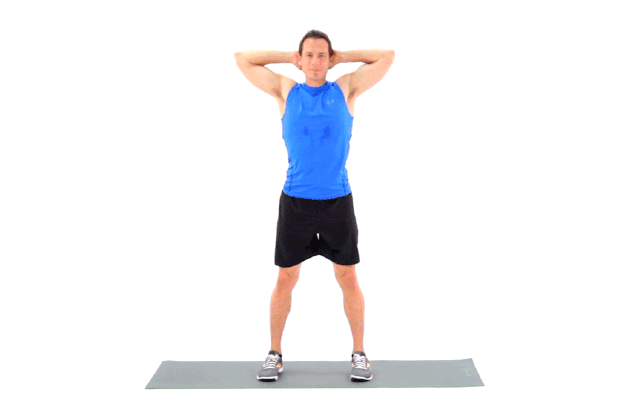
This variation is very similar to a regular body-weight squat, but it requires more balance and coordination. Since you won't have your hands raised in front of you as a counterbalance, you'll need to recruit more core strength to keep your torso upright.
Start standing as if you were preparing for a standard squat, but place both hands behind your head.Keeping your back straight and your chest upright, squat back and down. You may find you need to put more weight in your heels than with a regular squat, but don't allow your toes to lift off the ground. Stand back up again by pressing through your feet.3. Plie Squat Proper form for plie squats. (Image: Demand Media Studios)
Proper form for plie squats. (Image: Demand Media Studios)
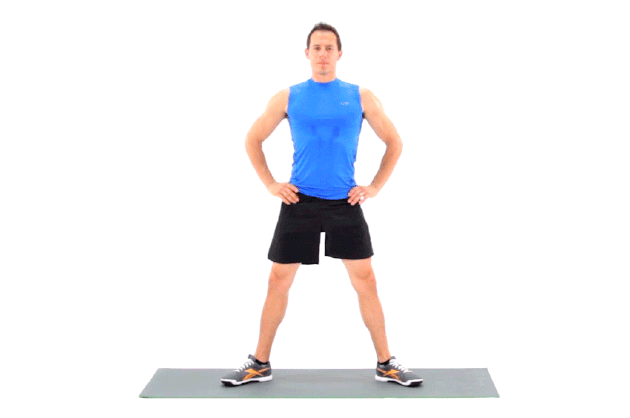
Channel your inner ballet dancer for a more challenging squat. This variation changes your footing and widens your stance to target more of the muscles along your inner and outer thighs while still recruiting glutes, quads and hamstrings.
Stand with your feet several inches wider than hip distance and your toes pointed out at a 45-degree angle. Either place your hands on your hips or raise and lower your arms like a standard squat. Bend your knees and your hips to lower toward the floor. Keep your back perpendicular to the floor instead of bending slightly forward. Drive through your feet to return to standing.4. Jump Squat Proper form for jump squats. (Image: Demand Media Studios)
Proper form for jump squats. (Image: Demand Media Studios)
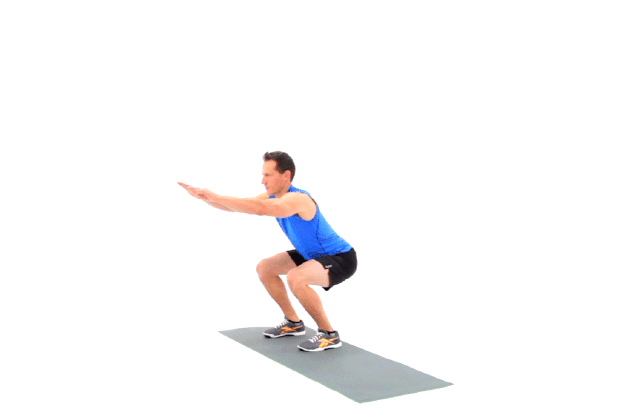
Squatting can actually improve your jump height, according to a 2012 study published in the Journal of Strength and Conditioning Research. So why not take that a step further and incorporate jumping into your squat routine? This plyometric variation is a bit more advanced, so make sure you've completely mastered basic squats and have healthy knees before attempting.
Assume the same stance as a regular squat. Squat back and down from your hips and bring your arms back behind you for momentum. Drive through your heels and jump straight up into the air from the bottom of your squat, arms swinging up overhead or at your sides.Land with knees bent to absorb the impact and go straight into your next squat jump.5. Single-Leg Squat Proper form for single-leg squats. (Image: Demand Media Studios)
Proper form for single-leg squats. (Image: Demand Media Studios)
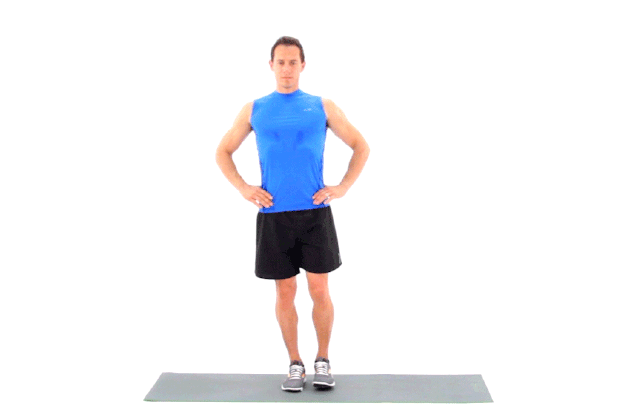
Single-leg work can be challenging, but it's also beneficial because it can correct any imbalances you might have. For example, if your right leg is stronger than your left leg, your right leg might compensate for the left in a traditional squat. But in a single-leg squat, you're balancing on only one leg at a time, so that leg has to do all the work.
Advertisements
6. Goblet Squat Proper form for a goblet squat. (Image: Demand Media Studios)
Proper form for a goblet squat. (Image: Demand Media Studios)
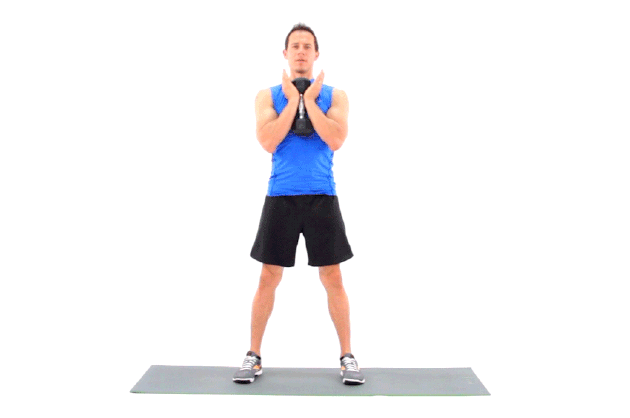
Though this variation is especially great for women because it strengthens the hips in a more open position, guys can still reap the benefits too! The only modifications from a regular squat are out-turned feet and the addition of a dumbbell or kettlebell.
Begin with your feet wider than hip-width apart and feet turned out slightly. Holding the weight with both hands at the center of your chest (like a goblet), hinge your hips back and sink into a squat, keeping your tailbone pointed toward the ground and your chest elevated by using your core. Press through all four corners of your feet and return to standing.7. Back Squat Proper form for back squats. (Image: Demand Media Studios)
Proper form for back squats. (Image: Demand Media Studios)
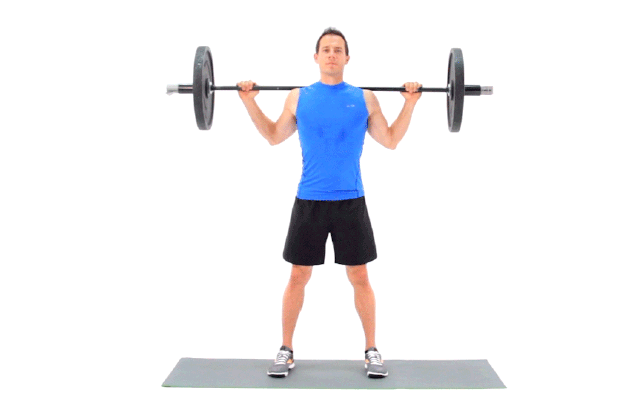
When it comes to free weights versus machines, free weights are the clear winner. Although both machines and free weights can help strengthen your muscles, according to the Mayo Clinic, free weights inherently demand proper technique. Plus, without a machine, you need more core strength to keep yourself upright.
Holding a loaded barbell across the back of your shoulders (or just the barbell if you're a beginner), stand in the basic squat starting position. Without arching your back or straining your neck, lower into a squat, sitting back into it. Support the weight with your back, shoulders and hands — not with your neck — and keep your tailbone tucked under you so that your lower back doesn't arch. Press through your heels and stand up.8. Front Squat Proper form for front squats. (Image: Demand Media Studios)
Proper form for front squats. (Image: Demand Media Studios)
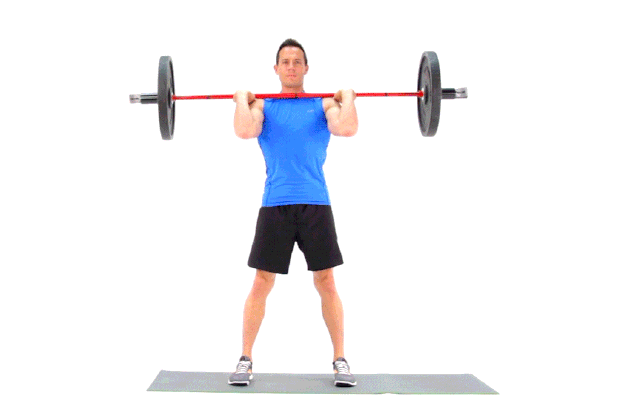
The front squat is a complementary variation to the back squat. This variation may be better for those that want to increase lower back strength or lack external range of motion in their shoulder, according to the National Academy of Sports Medicine.
Start just like a back squat, except hold the loaded barbell (or just the barbell) in front of your chest, elbows pointing down. You can also use dumbbells for this variation if you don't have access to a barbell. Squat down so that your elbows barely touch your knees, and then stand back up again.9. Split Squat Proper form for split squats. (Image: Demand Media Studios)
Proper form for split squats. (Image: Demand Media Studios)
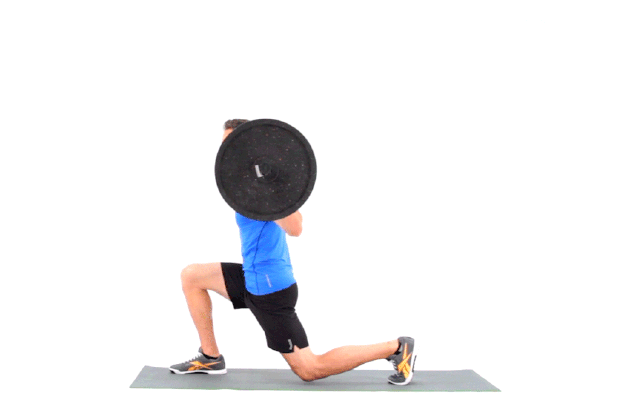
A split squat may look more like a lunge than a squat, but the principles of the squat still apply here. For an added stability challenge and more single-leg work, you can elevate your back foot on a box or a bench as you go through the range of motion.
Hold a barbell across the back of your shoulders and your feet several feet apart, one in front of the other. Bend both knees and lower down until your back knee almost touches the ground. Both knees should be at 90 degrees and your front knee shouldn't extend over your front toes. Hold for a moment before returning to standing. Complete your reps on one leg before switching legs.10. Dumbbell Sumo Squat Proper form for dumbbell sumo squats. (Image: Demand Media Studios)
Proper form for dumbbell sumo squats. (Image: Demand Media Studios)
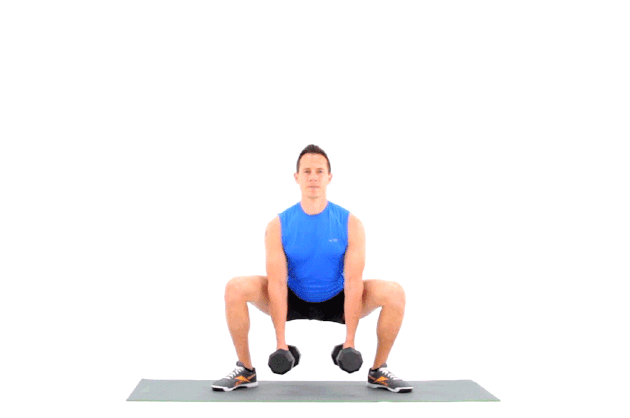
This variation is similar to the goblet squat. The only difference is how you hold the weight. The trick here is to recruit abdominal and back muscles to keep your chest from being pulled forward by your dumbbells.
Stand with your feet slightly wider than hip-width apart and your feet turned out at 45 degrees. Holding a dumbbell in each hand, let your arms hang directly in front of you between your legs. Bend both of your knees and lower yourself down so that the weights almost touch the floor (without bending your chest forward). You'll look (and probably feel) a bit like a sumo wrestler. Drive through your heels and return to standing.11. Pistol Squat Proper form for pistol squats. (Image: Demand Media Studios)
Proper form for pistol squats. (Image: Demand Media Studios)
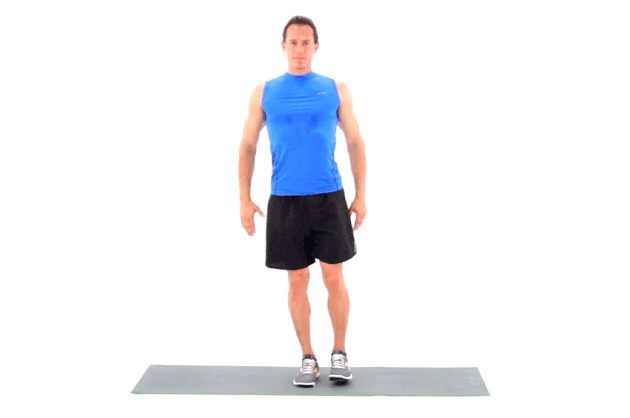
As one of the most advanced squat variations, you'll need to make sure you've built up enough single-leg strength and core stability to master the pistol squat. It's even more advanced than the single-leg squat, since you'll bend deeper as you hold one leg out in front of you.
With feet hip distance apart, slowly shift your weight to your right leg as you extend your left leg out in front of you. Raise your arms in front of you at chest level to help you balance. Engage your core and hinge from your hips to squat down, maintaining your balance on your right leg. Go as low as you can without touching the floor, then drive through your heel to stand back up.12. Squat Thrust
Advertisements
Proper form for squat thrusts. (Image: Demand Media Studios)
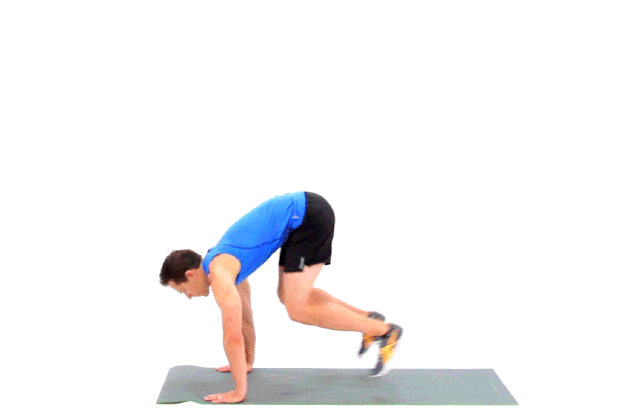
Advertisements
Similar to a burpee, this exercises incorporates a squat, but it's so much more than that, as you'll recruit muscles from nearly every part of your body. And just like burpees, they might be your new favorite exercise you love to hate.
Stand with feet hip-distance apart and pointing forward. Hinge your hips back, squat down and place your hands shoulder-width apart (or slightly wider) near your feet. Transferring your weight to your hands, jump your feet back so that you're in the top of a push-up. Make sure your body is one straight line from head to toe. Hop your feet back to your hands, stand up and repeat. REFERENCES & RESOURCES Sports Medicine: "Analysis of the load on the knee joint and vertebral column with changes in squatting depth and weight load." Journal of Strength and Conditioning Research: "Influence of squatting depth on jumping performance." Mayo Clinic: "For weight training, is it better to use free weights or machine weights?" National Academy of Sports Medicine: "FRONT SQUAT OR BACK SQUAT—WHICH SHOULD YOU CHOOSE?"
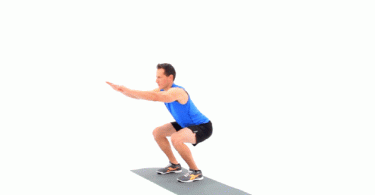
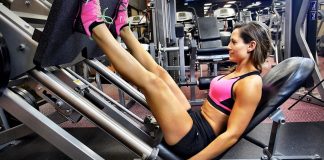
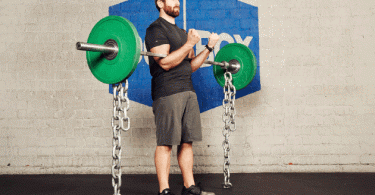
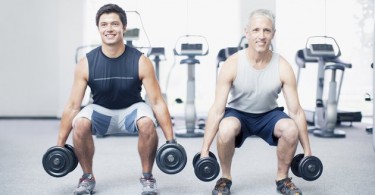
Comments